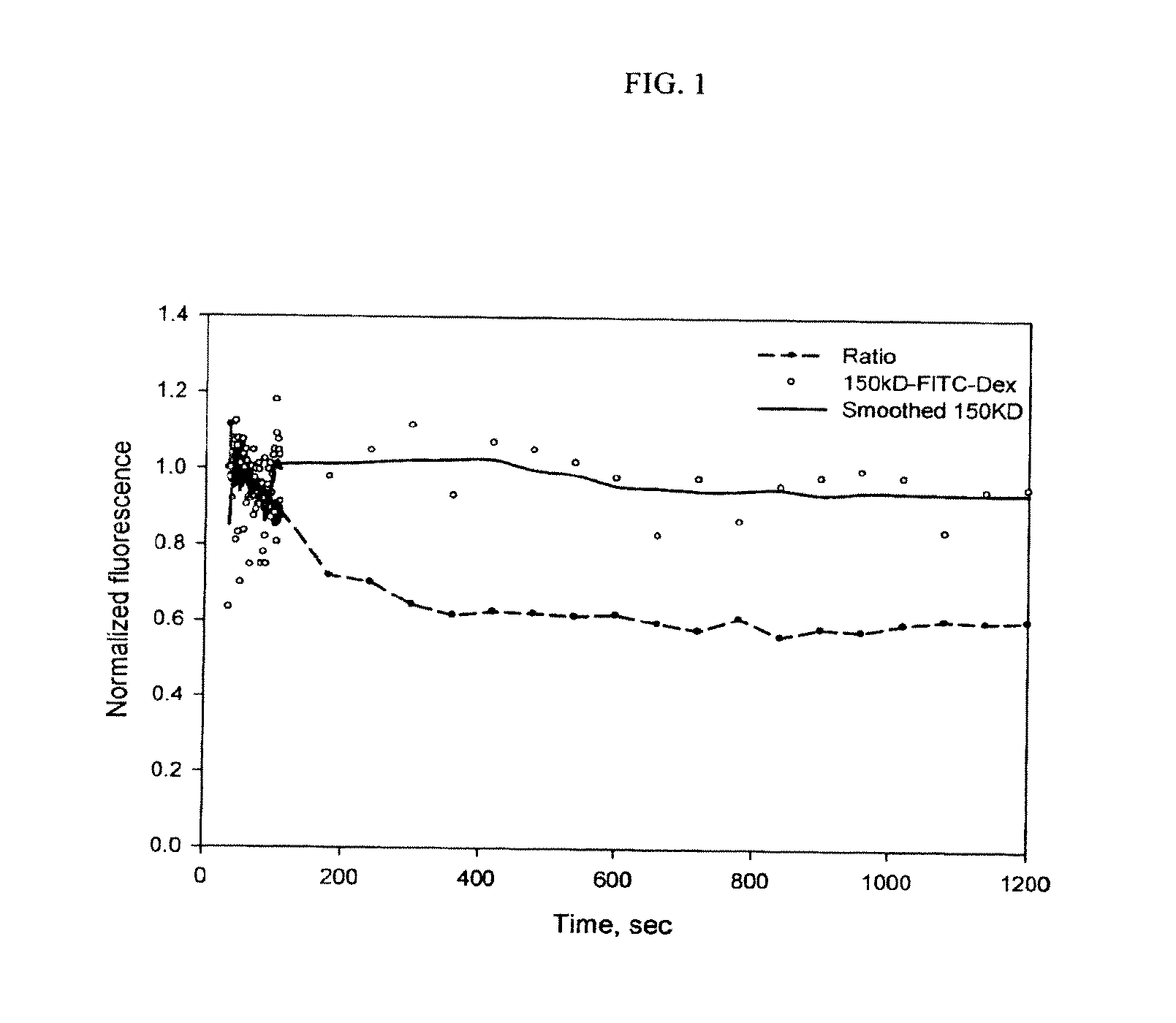Measurement of body fluid volumes
a body fluid and volume measurement technology, applied in the field of body fluid volume measurement, can solve the problems of albumin leakage and distribution to the interstitial fluid, limited use of icg method, laborious method,
- Summary
- Abstract
- Description
- Claims
- Application Information
AI Technical Summary
Benefits of technology
Problems solved by technology
Method used
Image
Examples
example 1
Measurement of TVPV and ECFV in Bilaterally Anephric Rats
[0059]The example shown here was a test conducted on a bilaterally anephric rat, which was infused with a mixture of 3 kDa Texas Red-dextran and 150 kDa FITC-dextran. The dynamic plasma fluorescence intensity was obtained by in vivo two-photon liver imaging of vascular plasma. Only the vascular plasma-containing regions in each image were included for calculation. The decay curve of the fluorescence intensity of the 150-kDa FITC-dextran, as well as the decay curve of the ratio of the fluorescence intensity of the Texas Red-dextran to that of the FITC-dextran after the infusion is shown in FIG. 1. Using the ratio rather than the 3 kDa Texas Red dextran or the 150 kDa FITC-dextran signal directly helped reduce the signal fluctuation caused by focus movement during imaging since the same fluctuation showed up in both channels.
[0060]To test if the volumes determined by this method agree with expected values, a mixture of 3 KDa Tex...
example 2
Anticipated Minimally Invasive Method for Measuring Fluid Volumes in a Patient with Renal Failure
[0063]A minimally invasive method for measuring TVPV, ECFV and TV in a patient with renal failure comprises a small dextran (molecule size of about 1 kDa to about 20 kDa) labeled with a first fluorescent dye to distribute to the vascular and interstitial spaces and a large dextran (molecule size of about 70 kDa to about 500 kDa, preferably about 70 kDa to about 250 kDa), labeled with a second fluorescent dye for distribution only to the vascular space of the animal. The molecules can be simultaneously detected in vivo using a dual channel fluorescence detection device and a proprietary fiber optic catheter. The fluorescence device and the fiber optic catheter are disclosed in pending U.S. patent application Ser. No. 12 / 425,827, the disclosure of which is hereby incorporated by reference as if fully set forth herein and, more specifically, for this specific subject matter disclosed at Par...
PUM
| Property | Measurement | Unit |
|---|---|---|
| molecular weight | aaaaa | aaaaa |
| molecular weight | aaaaa | aaaaa |
| total vascular plasma volume | aaaaa | aaaaa |
Abstract
Description
Claims
Application Information
 Login to View More
Login to View More - R&D
- Intellectual Property
- Life Sciences
- Materials
- Tech Scout
- Unparalleled Data Quality
- Higher Quality Content
- 60% Fewer Hallucinations
Browse by: Latest US Patents, China's latest patents, Technical Efficacy Thesaurus, Application Domain, Technology Topic, Popular Technical Reports.
© 2025 PatSnap. All rights reserved.Legal|Privacy policy|Modern Slavery Act Transparency Statement|Sitemap|About US| Contact US: help@patsnap.com

